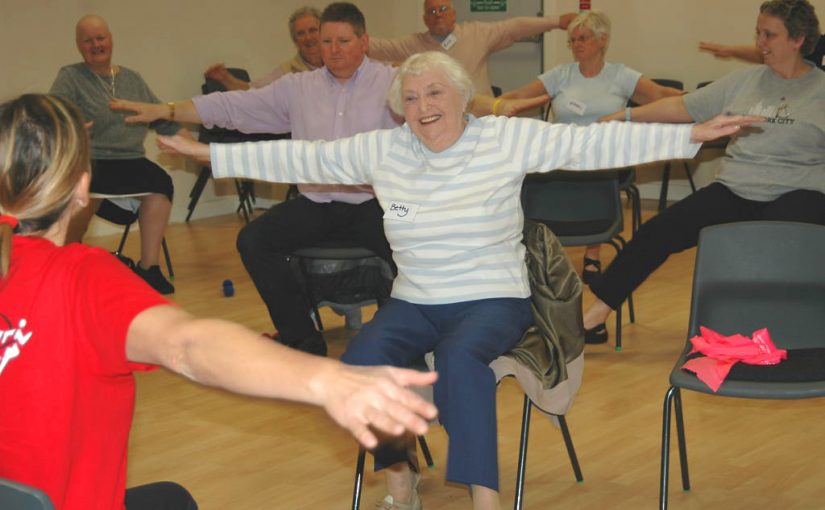A global panel of exercise oncology experts published new guidance recommending the systematic use of an “exercise prescription” to help cancer patients cope with treatment side effects and lower the risk of developing certain cancers.
The American College of Sports Medicine (ACSM) convened the group, including Professor Anna Campbell from Edinburgh Napier’s School of Applied Sciences, from 17 international partner organisations. The group reviewed the latest scientific evidence and offered recommendations about the benefits of exercise for prevention, treatment, recovery and improved survival.
ACSM Immediate Past President Katie Schmitz, who co-chaired the panel, said: “With more than 43 million cancer survivors worldwide, we have a growing need to address the unique health issues facing people living with and beyond cancer and better understand how exercise may help prevent and control cancer. This multidisciplinary group of leaders at the forefront of exercise oncology aimed to translate the latest scientific evidence into practical recommendations for clinicians and the public and to create global impact through a unified voice.”
Edinburgh Napier’s Professor Campbell has been working in the area of exercise and cancer survivorship for 20 years – particularly in the area of implementation of exercise programmes after a cancer diagnosis.
She said: “These updated recommendations are designed to convince clinicians to refer and to help cancer patients to incorporate physical activity into their recuperation. These papers demonstrate how much the area of exercise oncology has developed over the past five years in terms of the strength of evidence of the benefits of staying active after a cancer diagnosis, more clarity on specific guidelines and finally how to put a referral pathway and implementation of programmes into practice.”
Turning their theory into practice, Gary MacDougall, a 48-year-old man from Edinburgh who had been diagnosed with pancreatic cancer joined Professor Campbell and her team’s exercise-focused programme in April 2018. He claims that during his first six chemotherapy sessions he “became stronger and fitter.” Remarkably his tumour had shrunk to the point where he was eligible for surgery. He said “Whether it was chemotherapy, fitness, diet or just ‘hope’ – I believe they all played a part – the doctors were exceptionally surprised my tumour shrunk enough in those first six chemotherapy sessions and gave me the chance to have surgery. That operation was a year ago and after six further chemotherapy sessions I am still here, and my cancer markers are looking good.”
The new guidance and recommendations, for use by health care and fitness professionals when creating exercise programmes for cancer patients and survivors, include:
- For all adults, exercise is important for cancer prevention and specifically lowers risk of seven common types of cancer: colon, breast, endometrial, kidney, bladder, esophagus and stomach.
- For cancer survivors, incorporate exercise to help improve survival after a diagnosis of breast, colon and prostate cancer.
- Exercising during and after cancer treatment improves fatigue, anxiety, depression, physical function, quality of life and does not exacerbate lymphedema.
- Continue research that will drive the integration of exercise into the standard of care for cancer.
- Translate into practice the increasingly robust evidence base about the positive effects of exercise for cancer patients.
Organisations represented on the international panel include the American Cancer Society, the US-based National Cancer Institute, the Canadian Society of Exercise Physiology, Macmillan Cancer Support and the German Union for Health Exercise.
Full details of the review and recommendations are outlined in three academic papers published in two scientific journals. Edinburgh Napier’s Professor Campbell co-authored “Exercise Is Medicine in Oncology: Engaging Clinicians to Help Patients Move Through Cancer,” which was published in CA: A Cancer Journal for Clinicians, a flagship journal of the American Cancer Society.
